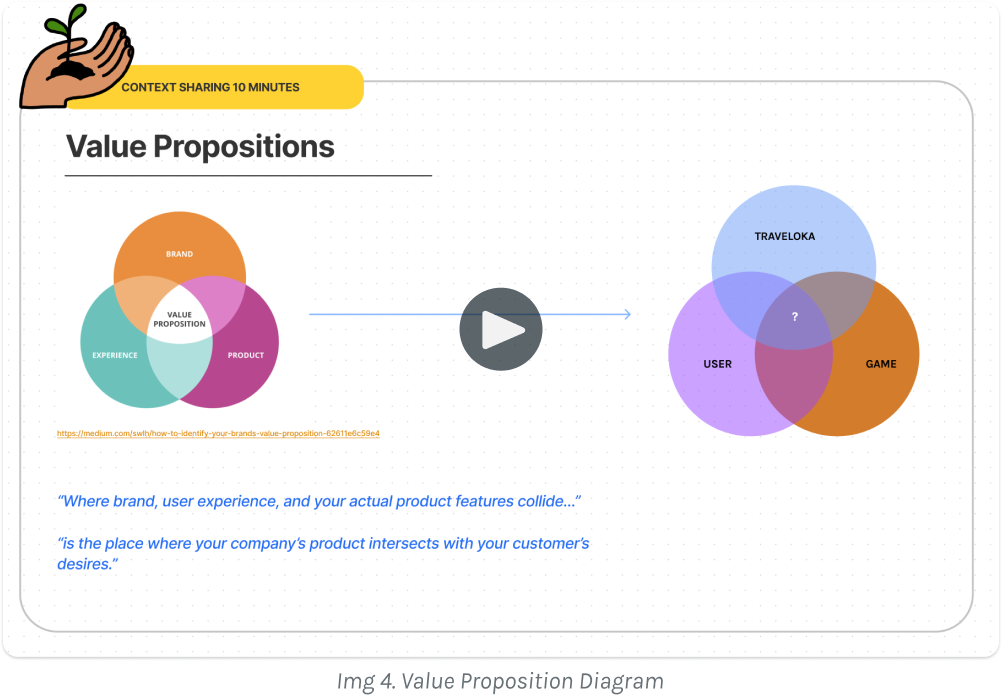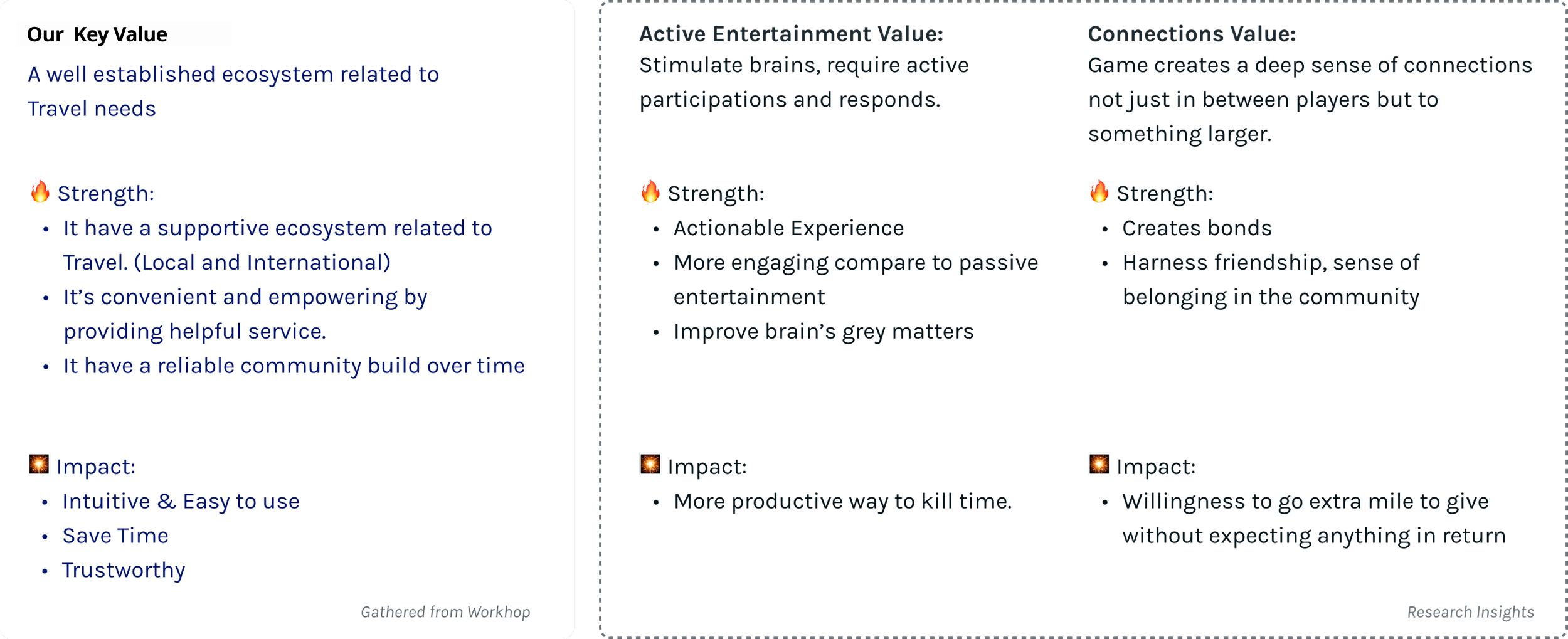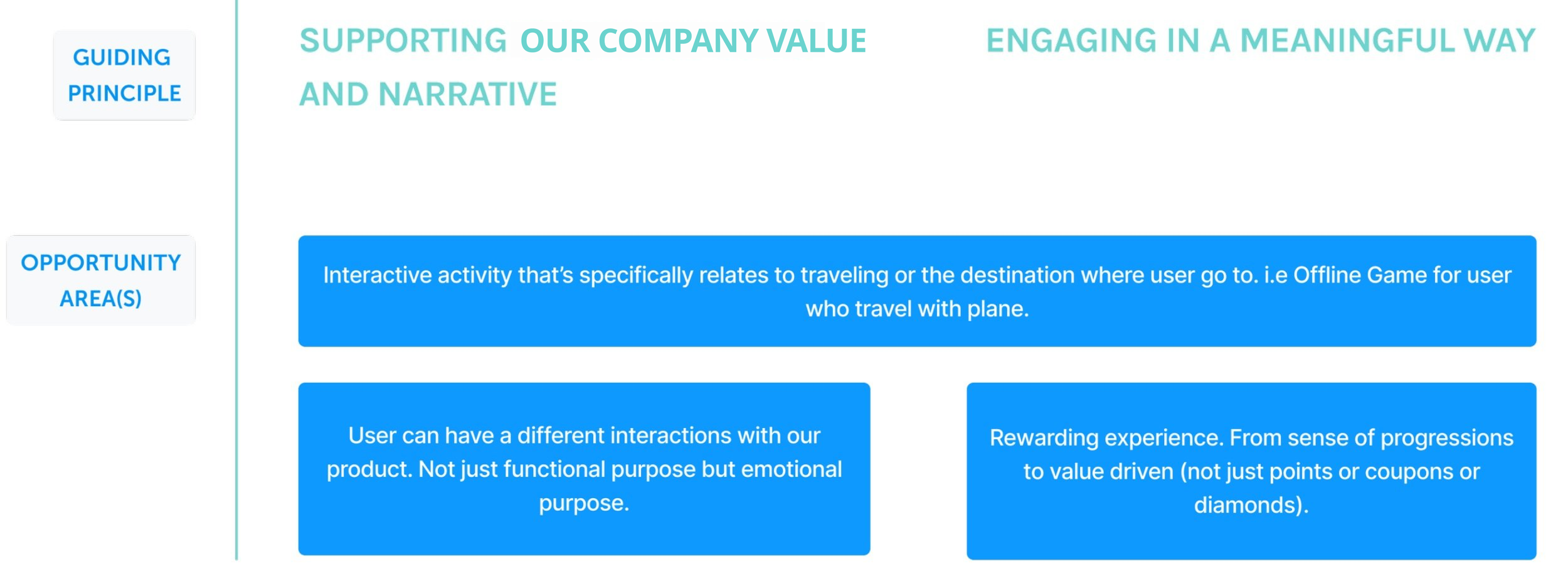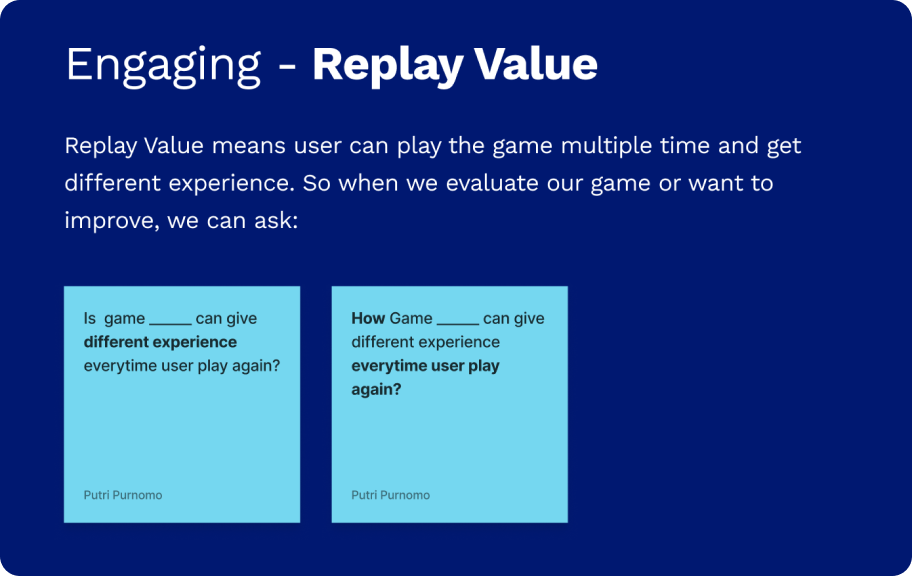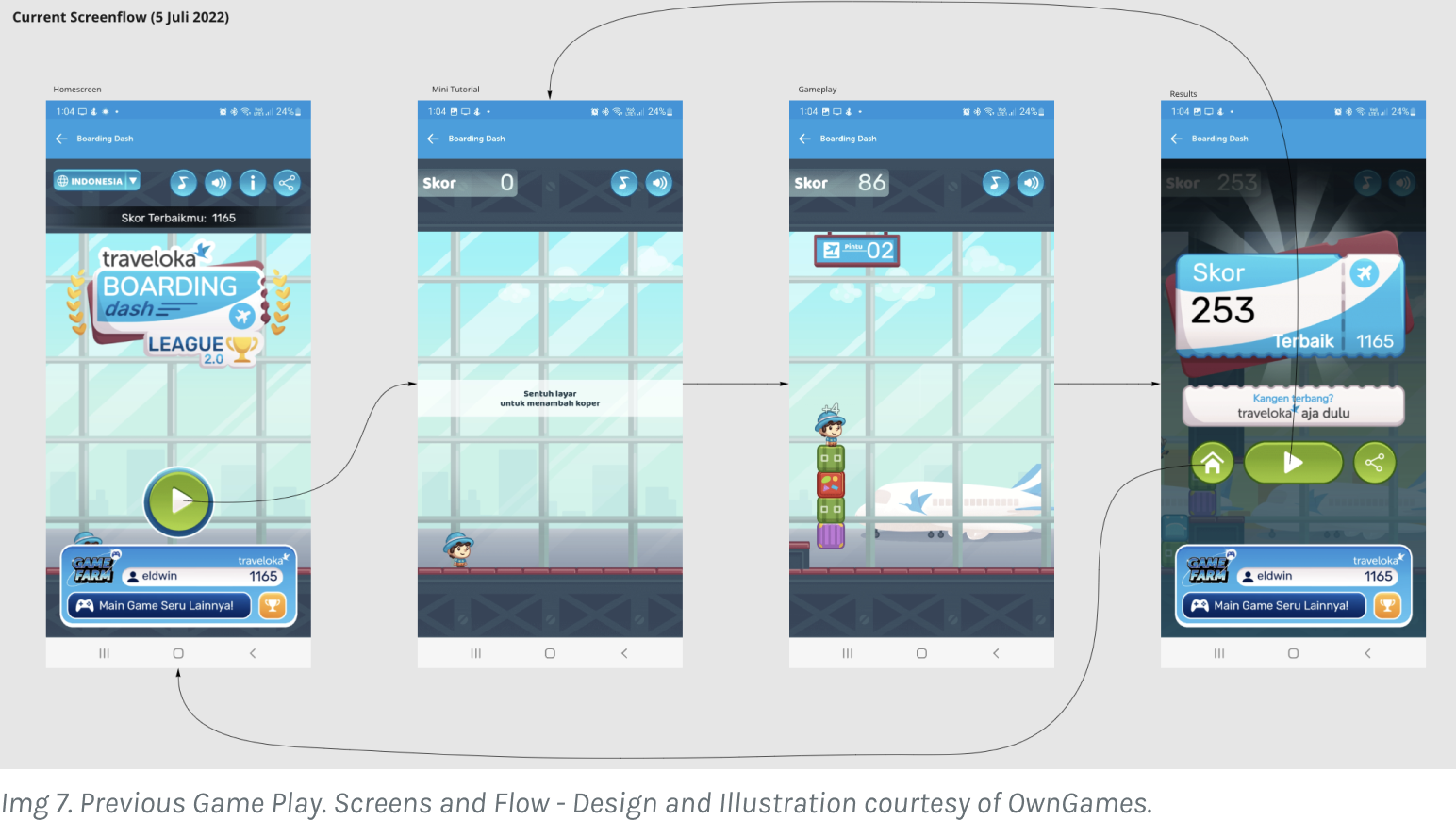2022・SERVICE DESIGNER・TRAVELOKA
Game On: Level up Engagement with Interactive Entertainment
How might we design an engaging interactive entertainment for traveler to engage with our product?
In late 2021, still affected by pandemic, the company need to increased the engagement rate of their active users. They see the opportunity in investing on Gaming Industry for Mobile App. The market size for Casual Game are growing by 10.47%* (222-2027), and one of the things that contribute to this grow is people staying at home most of the time.
The company released 24 game in total. However the engagement is very low. 90% of user play only once or twice in the course of months. Design was tasked to investigate the cause and finds what kind of game that the company should build to increase the engagements.
CHALLENGES
*source from statisca for Indonesian Market
IMPACT
In 2022, The product was later merge into central (Central) Team to focus more on it’s engagement potential rather than profits.
I was working with our Marketing and Product team to gather informations on what the team did before I was joining. The team mentioned that the previous strategy focus on producing Casual game as much as possible and see which one works; indicate by the number of users who return to play.
The numbers shows that only 4 games retain users, but we couldn’t really tell why. Looking at it, we predicted certain gameplay works better than others. Another goal they want to pursue is to make the product profitable. Although the market size looks promising, game industry is highly saturated. And so I propose two things for the next step
Know our potential users. Conduct generative research in understanding users motivation for keep playing a game
Determine the product value propositions
Implement and test the output derived from both.
The plan was for utilizing research insight in shaping the product value propositions. The value proposition would distinguish and highlight our product in an already saturated market.
PROCESS
Game is a form of active entertainment which require us to react & respond actively to a different situations. These different variable of challenges is what makes game fun*.
The ideal situation is to create flow state, where it’s a balance between enough challenges and skill to keep you hook. If it’s too easy, people will get bored while too hard people will be discourage.
I create this diagram of relationship between users and game.
There’s 3 elements that affects how user perceive fun (represent by relationship between Challenge & Skill)
Influence: Social aspect. Could be in a form of direct or indirect contact
Experience: Perceptions of Game.
Familiarity: Knowledge of how to play game. Racing and Sports game usually have low barrier on entry due to people familiarity with the concept.
The diagram shows that Familiarity is necessary as a gateway to start playing, but what retain user to keep playing are the balancing loop between Challenges, Skill and Experience.
WHAT KEEPS PEOPLE PLAY GAMES?
We also learn that different experience of Gamer create a different expectation of element needed within the game they play. For example a Heavy Gamer once said that “Candy Crush isn’t a Real Game” or How PC Gamer think “Mobile Game couldn’t provide the same satisfaction of visual and story as PC could”. Therefore, who are we going to specifically target makes it crucial for us when producing and creating the Level of Game we want.
We decided to focus on Light and Medium Gamer based on our potential users, the size of the market, either existing users or new users, and the feasibility of our system to create the minimum level of entertainment that’s required.
DETERMINE THE PRODUCT’S VALUE PROPOSITIONS
To achieve these objective, I designed a 6 hours workshop in total, span across 3 days, each for 2 hours to align with key stakeholders. The workshop are attend by Product, Marketing, Business, Data and Engineer.
I used Emotional Design Framework to highlight the difference of nature on our existing product vs game creations that’s highlighted it’s functionality and services (i.e to booked a ticket and hotel) Game needs not only to be at visceral level, but touch the reflective level.
Screenshot of 10 min video use as context sharing to prime workshop participant.
The workshop helps to provide a clear and actionable value propositions by
Align the stakeholders to a common goal and reduce miscommunications
Have a clear vision on how to achieve our next goal
Prepare a bank of ideas for future references during implementation phase
KEY SUMMARY OF THE WORKSHOPS
DAY 1
🚩 Define the functional and emotional outcome we want to provide how does those aspects helps our business.
DAY 2
🚩 Understand what’s TVLK USP as game publisher.
🚩 Understand the gap. Assess opportunity through our USP to achieve business impact from Day 1
DAY 3
🚩 Frame the opportunity area and generate inspirations to come up with list of potential solutions.
The team agrees that our product should be engaging & meaningful, while supporting the company narrative. These two value was used as guiding principle on ideation sessions.
IMPLEMENTATION I: FROM VALUE PROPOSITIONS TO GUIDING PRINCIPLE
We need to translate the guiding principle into the product. The expectation is for every game that was designed will carry the core value propositions. So I decomposed it into several Game’s Building Blocks.
Image below is example from one of the Value, Engaging. Other values are Meaningful and Support The Company Narrative
Using these building blocks as frameworks, design & products ideate several ideas for improving our existing game. I propose the scoring mechanism using our building blocks to choose games we want to prioritise.
The idea for the scoring is using two measure
a. How many building blocks can it supports
b. Game ranking based on user weekly retentions
Right Img: Building Blocks Visualizations
Img representing sample of exercise in using building blocks of Game from Value Propositions, for Boarding Dash Game
Looking at our game inventory, we saw that the action genre* have the most inventories. The potential for action game is great but due to it’s low learning curve, player skill can surpass the challenge rather quickly. Looking at the average playtime, user only play on average19 seconds before they drop.
Boarding Dash falls into the category of Action game. The existing gameplay was very similar to Flappy Bird, where players objective is gather as much score as possible by avoiding obstacle. Based on our framework, Boarding Dash fits into majority of our criteria.
*Genre can be determined by the the activity that players need to do in order to achieve the goal. This core genre are taken from Gameplay and Design, a book by Kevin Oxland.
IMPLEMENTION II: FROM GUIDING PRINCIPLE INTO PRODUCT DEVELOPMENT
There are 4 aspect we want to improve for our next release
Improve the Game Play. Based on our game data of game with highest retention, we need to have increase difficulty level and improving the balance between each level with the time limit.
Adding storyline as a sense of purpose
Adding tracking integrated system to improve captured metrics of time spent
Strategize the release plan with marketing.
ROLE & PROCESS SUMMARY
As a Strategic Designer, I have delivered
Research Report
Product Roadmap/vision
Product Value Propositions
Product Hi-Level Strategy
Game Building Blocks
Prioritization Framework
Implementation Strategy




